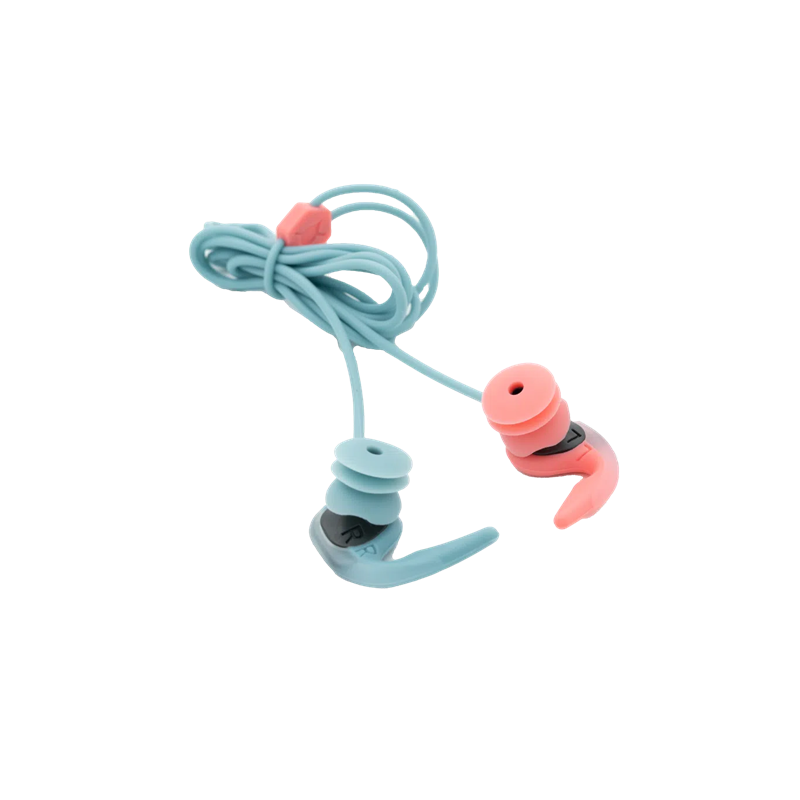- Nouveau







Bouchons d'oreilles pour le surf qui protègent vos oreilles tout en préservant l'audition et l'équilibre. Dotés de pièces interchangeables de différentes tailles, ils offrent un ajustement parfait et confortable, parfaitement adapté à vos oreilles. Idéals pour tous les sports nautiques : surf, natation, plongée sous-marine, apnée, kayak en eau vive, sports de glisse, wakeboard, et bien plus encore.
Comprend :
1 paire de bouchons d'oreilles SurfEars, pré-montés avec ailettes de taille L et gels M, et un cordon amovible.
Étui de rangement en silicone premium avec fermeture magnétique, trous d'aération pour le séchage des bouchons et mousqueton pour un transport facile.
Cordon accessoire avec 3 tailles d'embouts supplémentaires (XS, S, L), ailettes de taille M et une option sans ailettes pour un ajustement parfait à presque toutes les oreilles.
Surfer’s Ear is a condition characterized by abnormal bone growth within the ear canal. This phenomenon, medically known as exostosis, is the body’s natural response to repeated exposure to cold water and wind.
The bone growth serves as a protective mechanism for the eardrum but unfortunately continues to grow over time. This condition is prevalent among surfers due to their frequent exposure to windy and wet conditions—hence the name.
The rate of bone growth can vary among individuals and is influenced by factors such as water temperature and frequency of exposure.
What are the Symptoms?
Water Retention: If you find that water remains trapped in your ears after a surf session, it could be an early sign.
Recurrent Ear Infections: The narrowing of the ear canal makes it difficult for water to drain, increasing the risk of infections. This risk is particularly heightened for surfers who travel from colder to warmer climates with more polluted waters.
Advancements in wetsuit technology have enabled surfers to spend more time in colder waters, inadvertently increasing the prevalence of Surfer’s Ear.
Learn more about frequently asked questions
Swimmer’s Ear, medically known as acute otitis externa, is an infection of the outer ear canal often caused by trapped water. Unlike Surfer’s Ear, which is characterized by bone growth, Swimmer’s Ear is an inflammatory condition usually triggered by bacteria or fungi.
The infection typically occurs when water remains in the ear canal for extended periods, creating a moist environment conducive to bacterial growth. This condition is common among swimmers, divers, and other water sports enthusiasts who frequently expose their ears to water.
The severity of Swimmer’s Ear can range from mild irritation to acute pain and can be influenced by factors such as water quality and frequency of exposure.
What are the Symptoms?
Trapped Water
If you notice water lingering in your ears after participating in water activities, this could be an early indicator.
Frequent Ear Infections
The moist environment in the ear canal can become a breeding ground for bacteria, leading to recurring infections. This risk is especially elevated for those who engage in water sports in varying water conditions, from chlorinated pools to natural bodies of water with varying levels of cleanliness.
Fiche technique

check_circle
check_circle